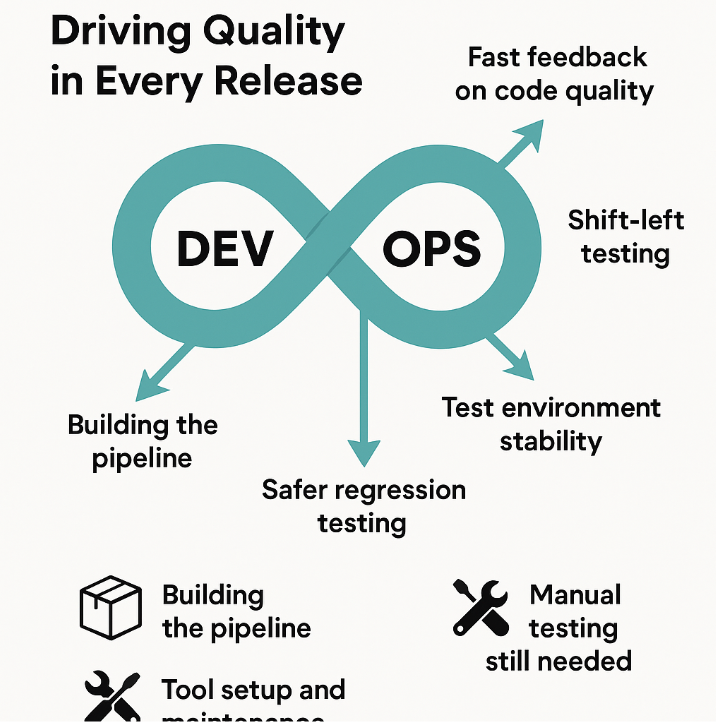In today’s fast-paced development world, speed and quality can no longer be mutually exclusive. That’s where DevOps comes in — not just as a buzzword, but as a game-changing approach to software delivery.
DevOps breaks down the silos between development, testing, and operations, encouraging these teams to work together toward a shared goal: reliable, fast, and continuous software delivery.
But what does this mean for testing?
Let’s explore.

💡 What is DevOps?
DevOps is an organizational philosophy that unifies software development (Dev) and IT operations (Ops). Its aim? To shorten the development lifecycle, deliver features more frequently, and ensure higher-quality releases.
It requires a cultural shift — not just new tools or workflows. This shift empowers cross-functional teams with:
- ⚙️ Automation
- ⏱️ Fast feedback
- 🧰 Integrated toolchains
- 💪 Team autonomy
DevOps encourages practices like Continuous Integration (CI) and Continuous Delivery (CD) to automate and streamline the build-test-release cycle.